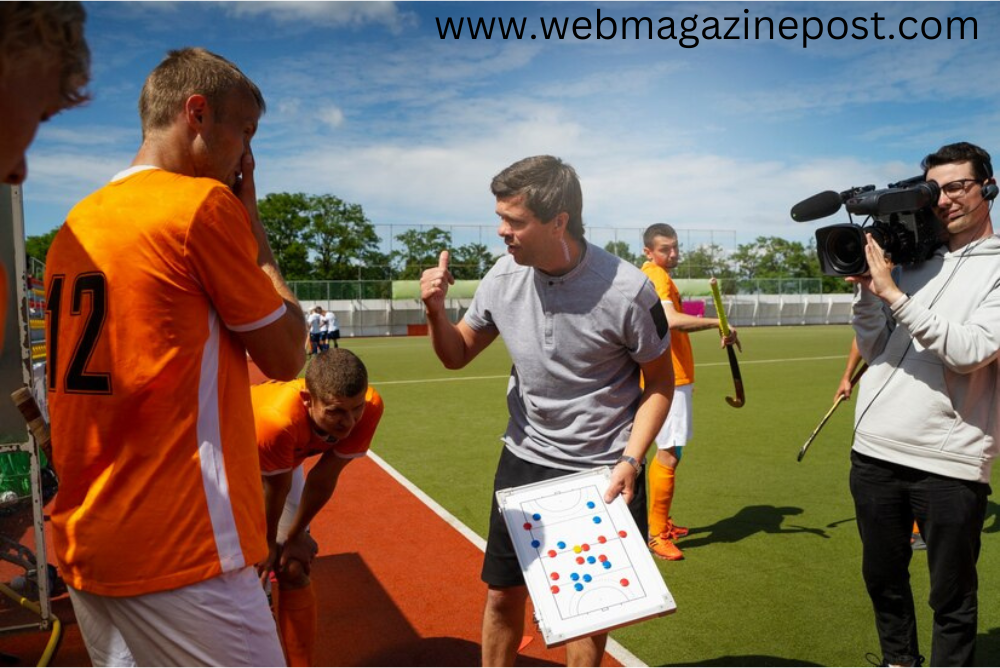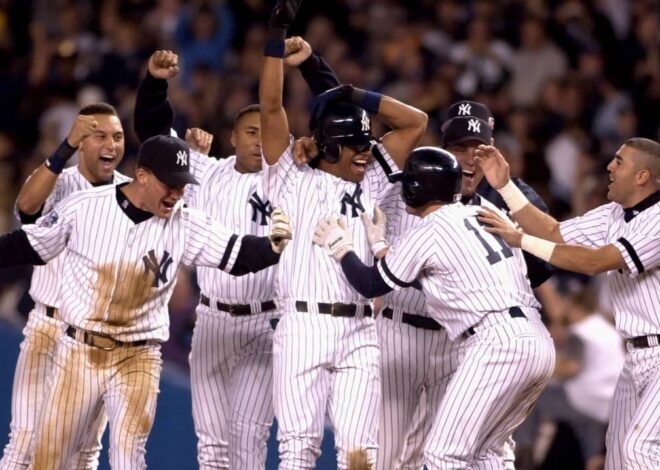
Unsuccessful Draft Pick: 100% High Stakes Gamble of Professional Sports
Introduction to Unsuccessful Draft Pick
When it comes to sports, Unsuccessful Draft Picks can make or break a team’s future. The anticipation, the excitement, the endless debates – draft day is a crucial moment for any franchise. But what happens when a highly touted draft pick doesn’t pan out? Let’s dive into the world of unsuccessful draft picks and explore why some players fail to meet expectations and how this impacts teams.
Understanding Draft Picks
The Unsuccessful Draft Pick process is an annual event in many major sports leagues, including the NFL, NBA, MLB, and NHL. Teams select players, usually from college or international leagues, to add fresh talent to their rosters. The process involves scouting, evaluating potential, and predicting how a player might fit into the team’s strategy. However, not every pick turns into a superstar.
What Constitutes an Unsuccessful Draft Pick?
An unsuccessful draft pick, commonly known as a “draft bust,” is a player who does not live up to the expectations associated with their draft position. This could be due to underperformance, injuries, or off-field issues. The impact is felt not only by the player but also by the team that invested time, money, and resources into their development.
High Expectations and Pressure
Being a top unsuccessful Draft Pick carries tremendous pressure. Players are expected to perform at high levels immediately, often under the watchful eyes of the media and fans. This pressure can be overwhelming, leading to performance anxiety and, in some cases, mental health issues.
Advanced Scouting Techniques and Technologies
In recent years, technological advancements have significantly enhanced the scouting process. Teams now use sophisticated software to analyze player performance, biomechanics, and even psychological profiles. For example, Major League Baseball (MLB) teams employ Statcast, a state-of-the-art tracking technology that measures everything from pitch velocity to player movement on the field. These tools help teams make more informed decisions, reducing the likelihood of unsuccessful draft picks.
Role of Analytics in Drafting

Analytics play a crucial role in modern drafting strategies. By analyzing vast amounts of data, teams can identify trends and patterns that might be overlooked by traditional scouting methods. The NBA’s use of advanced metrics like Player Efficiency Rating (PER) and Win Shares has revolutionized how players are evaluated. These analytics help teams identify undervalued players who may not have the traditional pedigree but possess the skills to succeed at the professional level.
The Role of Experience and Mentorship
Experience and mentorship play a vital role in a draft pick’s success. Veteran players and seasoned coaches can offer invaluable guidance, helping younger players navigate the complexities of professional sports. For instance, the mentorship of LeBron James has been crucial in the development of young players on his teams. A structured mentorship program can bridge the gap between raw talent and professional excellence.
Cultural and Organizational Fit
Beyond physical and technical skills, a player’s fit within the team’s culture is critical. Organizations with a strong, positive culture are more likely to develop successful draft picks. The Golden State Warriors, for example, have built a culture of teamwork, unselfish play, and continuous improvement, which has helped them turn Unsuccessful Draft Picks like Stephen Curry and Klay Thompson into superstars. Understanding and emphasizing cultural fit can prevent mismatches that lead to unsuccessful drafts.
Psychological Evaluation and Mental Health
The psychological aspect of drafting is gaining attention. Teams now employ sports psychologists to assess a player’s mental resilience, work ethic, and ability to handle pressure. This psychological evaluation helps teams identify players who are mentally prepared for the challenges of professional sports. Moreover, providing ongoing mental health support can help players cope with the stresses of being a highly Unsuccessful Draft Pick, potentially reducing the chances of failure.
Player Development Programs
Successful franchises invest heavily in player development programs. These programs offer comprehensive training that includes not only physical conditioning and skill development but also education on nutrition, mental health, and life skills. The San Antonio Spurs’ player development program is often cited as one of the best, helping players like Kawhi Leonard and Tony Parker exceed expectations. Investing in such programs ensures that draft picks have the resources and support they need to succeed.
Impact of Coaching
A great coach can make all the difference in a player’s career. Coaches who can mentor, motivate, and strategically utilize a player’s strengths are invaluable. The New England Patriots’ Bill Belichick is renowned for his ability to get the most out of his players, including late-round draft picks who have gone on to have successful careers. Effective coaching can turn a potential draft bust into a valuable asset.
Importance of Adaptability
Adaptability is a key trait for success in professional sports. Players who can adjust to different playing styles, positions, and team dynamics are more likely to thrive. For instance, Draymond Green of the Golden State Warriors was initially viewed as a tweener—too small to be a traditional power forward and not skilled enough to be a small forward. However, his adaptability has made him a cornerstone of the Warriors’ success. Teams that prioritize adaptability in their draft picks are better positioned to avoid unsuccessful outcomes.
Lessons from International Drafts

Looking beyond domestic leagues, international drafts offer valuable lessons. The NBA’s success in drafting international players like Dirk Nowitzki, Giannis Antetokounmpo, and Luka Dončić underscores the importance of global scouting. These players often bring unique skills and perspectives that can enhance team dynamics. By expanding their scouting networks internationally, teams can uncover hidden gems and diversify their talent pool.
The Impact of College Programs on Draft Success
College programs play a critical role in preparing players for professional sports. Programs with a strong emphasis on development, such as those at Duke University or the University of Alabama, produce draft picks who are often more prepared for the rigors of professional leagues. Collaboration between professional teams and college programs can ensure that players receive consistent training and development from an early age.
Addressing Off-Field Issues
Off-field issues, such as legal troubles, substance abuse, or personal problems, can derail a promising career. Teams must conduct thorough background checks and provide support systems to help players manage these challenges. The NFL’s Personal Conduct Policy and the NBA’s Rookie Transition Program are examples of initiatives designed to address off-field issues. By supporting players holistically, teams can mitigate the risks associated with off-field problems.
Importance of Character and Leadership
Character and leadership qualities are often as important as physical skills in determining a player’s success. Players who exhibit strong leadership, integrity, and work ethic can positively influence team culture and performance. Tim Duncan’s leadership with the San Antonio Spurs is a prime example of how character contributes to long-term success. Teams should prioritize these intangible qualities during the draft process.
Adapting to League Changes and Trends
The landscape of professional sports is constantly evolving, with new trends and changes in playing styles. Teams that adapt to these changes are more likely to draft successfully. For example, the NBA’s shift towards three-point shooting and positionless basketball has influenced draft strategies. By staying ahead of trends and adapting their scouting criteria, teams can ensure that their draft picks align with the future of the sport.
Utilizing Data Science and Machine Learning
Data science and machine learning are revolutionizing sports analytics. These technologies can predict a player’s potential, assess injury risks, and analyze performance metrics with unprecedented accuracy. The use of machine learning algorithms to analyze player data helps teams make more informed decisions. For instance, the use of predictive modeling in the NFL Draft has improved the accuracy of talent evaluation.
Balancing Youth and Experience
A successful team often strikes a balance between youth and experience. Drafting young talent while maintaining a core of experienced veterans creates a dynamic and resilient team. The Golden State Warriors’ blend of seasoned players like Stephen Curry and young talent like Jordan Poole illustrates the benefits of this approach. Balancing youth and experience ensures continuity and sustained success.
Case Studies of Unsuccessful Draft Picks
Consider Ryan Leaf, the second overall pick in the 1998 NFL Draft. Touted as a franchise quarterback, Leaf’s career was marred by poor performance and off-field issues. Similarly, in the NBA, Kwame Brown, the first overall pick in the 2001 draft, struggled to live up to the hype. These cases highlight the unpredictable nature of Unsuccessful Draft Picks and the myriad factors that can contribute to their failure.
Injuries and Their Role in Unsuccessful Drafts

Injuries are a significant risk for any athlete but can be particularly devastating for high-draft picks. Take Greg Oden, the first overall pick in the 2007 NBA Draft. His career was plagued by injuries, limiting his time on the court and ultimately leading to his early retirement. Teams now employ advanced medical evaluations to mitigate these risks, but injuries remain an unpredictable factor.
Scouting and Evaluation Mistakes
Even with sophisticated scouting methods, mistakes happen. Evaluators might miss key traits or overestimate a player’s potential. For example, in the 2006 NFL Draft, the Oakland Raiders selected Jamarcus Russell first overall, a decision that proved costly due to Russell’s lack of work ethic and performance issues.
Developmental Issues
A player’s development post-draft is crucial. Without proper training, mentoring, and support, even the most talented athletes can falter. The importance of a robust developmental program is evident in the successes of teams like the San Antonio Spurs in the NBA, who have consistently turned late Unsuccessful Draft Picks into star players.
Team Dynamics and Fit
A player’s success is also influenced by their fit within a team. A mismatch in playing style or team culture can hinder performance. Consider the case of Johnny Manziel in the NFL. Despite his talent, his off-field behavior and poor fit with the Cleveland Browns’ culture contributed to his quick exit from the league.
Management and Decision-Making
The role of management in the success of Unsuccessful Draft Picks cannot be overstated. Poor decision-making, whether in the draft process or in handling players post-draft, can lead to failures. The New York Knicks, for example, have faced criticism for their draft choices and management decisions, impacting their performance over the years.
Comparative Analysis: Successful vs. Unsuccessful Picks
Successful draft picks often share common traits: work ethic, adaptability, and a supportive environment. Teams like the New England Patriots have excelled by identifying and nurturing these traits, turning late-round picks into key contributors. Comparative analysis shows that successful picks are not just about talent but also about the right environment and support.
Long-Term Impact on Franchises

Failed Unsuccessful Draft Picks can have long-term repercussions for franchises. Financial losses, missed opportunities, and a tarnished reputation are just a few consequences. Teams must develop strategies to recover from these setbacks, such as focusing on future drafts, trades, and free agency to rebuild their rosters.
Fan and Media Reactions
Fans and media play a significant role in shaping the narrative around Unsuccessful Draft Picks. Unsuccessful picks often face harsh criticism, which can affect their confidence and performance. However, supportive fan bases and constructive media coverage can help players navigate these challenges and potentially turn their careers around.
Social Media and Public Perception
In today’s digital age, social media plays a significant role in shaping public perception of draft picks. A player’s social media presence can influence their popularity and marketability. However, it also exposes them to public scrutiny and criticism. Managing a player’s social media image is crucial for maintaining their confidence and public support. Teams often employ public relations experts to help players navigate the digital landscape effectively.
Economic Implications of Draft Success and Failure
The financial stakes in drafting are immense. Successful draft picks can lead to lucrative contracts, endorsements, and increased ticket sales. Conversely, unsuccessful picks can be costly, draining resources without yielding returns. The financial burden of a failed Unsuccessful Draft Pick extends beyond the player’s salary, encompassing lost opportunities and potential revenue. Teams must carefully balance financial considerations with talent evaluation to maximize their investment.
Recovery Strategies for Unsuccessful Draft Picks
When an Unsuccessful Draft Pick doesn’t pan out, teams must have strategies in place to recover. This can include trading the player to another team, focusing on developing other players, or adjusting the team’s strategy to mitigate the impact. The Boston Celtics, for example, have successfully navigated several unsuccessful draft picks by making savvy trades and focusing on long-term rebuilding strategies.
Recovery and Second Chances for Unsuccessful Draft Picks
While some draft picks may initially fail to meet expectations, second chances can lead to redemption. Players who work hard to improve their skills and adapt to the professional environment can revive their careers. For example, Ryan Tannehill’s resurgence with the Tennessee Titans after struggling with the Miami Dolphins demonstrates that unsuccessful draft picks can still achieve success with the right opportunities and support.
Building a Supportive Environment
A supportive team environment can significantly influence a player’s success. Teams that foster a positive, inclusive, and growth-oriented culture are more likely to develop successful draft picks. The Toronto Raptors’ emphasis on creating a family-like atmosphere has helped players like Pascal Siakam and Fred VanVleet thrive. Building such an environment can enhance player development and reduce the risk of unsuccessful drafts.
Long-Term Planning and Vision
Successful franchises have a clear long-term vision and strategy. They understand that drafting is just one part of building a championship team. By aligning draft strategies with long-term goals, teams can ensure that each Unsuccessful Draft Pick fits into their broader plan. The Philadelphia 76ers’ “Trust the Process” approach, despite its criticisms, was a clear example of long-term planning in action. This strategic alignment helps maximize the potential of each draft pick.
Balancing Risk and Reward
Drafting inherently involves risk, but successful teams know how to balance risk and reward. They take calculated risks on high-potential players while also securing more reliable, lower-risk picks. The Milwaukee Bucks’ selection of Giannis Antetokounmpo in 2013 was a high-risk, high-reward move that has paid off immensely. Understanding and managing this balance is crucial for avoiding unsuccessful draft picks.
Strategies to Avoid Unsuccessful Draft Picks
To avoid draft busts, teams are investing in advanced analytics, better scouting methods, and comprehensive development programs. Building a supportive team environment and focusing on player well-being are also crucial strategies. The goal is to create a holistic approach that maximizes the chances of draft success.
The Role of Fan Engagement
Engaging fans is crucial for maintaining support for Unsuccessful Draft Picks. Teams can involve fans in the draft process through social media campaigns, draft-day events, and behind-the-scenes content. Engaging fans creates a sense of investment and loyalty, which can provide a supportive environment for new players. The Philadelphia Eagles’ fan engagement strategies during the draft have helped build a strong and supportive fan base.
International Collaborations and Exchanges
Collaborations and exchanges with international leagues can enhance draft success. These partnerships provide access to diverse talent pools and innovative training methods. The NBA’s Basketball Without Borders program is an example of how international collaborations can foster talent development. By embracing international exchanges, teams can broaden their horizons and improve their draft outcomes.
Conclusion
Drafting is an art and a science, filled with uncertainties. While unsuccessful Unsuccessful Draft Picks are inevitable, understanding the factors that contribute to failure can help teams improve their processes. By learning from past mistakes and continuously evolving their strategies, teams can enhance their chances of picking future stars.
FAQs
What is an Unsuccessful Draft Pick bust?
A draft bust is a highly-touted Unsuccessful Draft Pick who fails to meet expectations, often due to performance issues, injuries, or off-field problems.
How do injuries impact Unsuccessful Draft Pick success?
Injuries can derail careers by limiting a player’s ability to perform, often leading to early retirement or reduced playing time.
Can a player overcome the label of being an unsuccessful draft pick?
Yes, with the right support and development, players can overcome early setbacks and revitalize their careers.
What are the most common mistakes teams make in the draft?
Common mistakes include overestimating potential, ignoring red flags, and failing to provide proper development and support.
How can teams improve their Unsuccessful Draft Pick rate?
Teams can improve by using advanced analytics, investing in comprehensive scouting, focusing on player development, and creating a supportive team culture.


